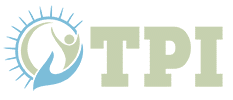Mouth Breathing vs. Nasal Breathing: OMT Improving Health
Breathing is something we do without thinking, but how you breathe can have a significant impact on your health. Many people are unaware that mouth breathing can lead to various problems. These problems can affect sleep, speech, facial growth, and overall health. Fortunately, orofacial myofunctional therapy (OMT) can help retrain the body for healthier breathing patterns.
In this post, we will look at the differences between mouth and nasal breathing. We will also discuss the health effects and how OMT can improve your life at any age.
The Difference Between Mouth and Nasal Breathing
Nasal breathing is the natural and preferred way for the body to take in oxygen. The nose acts as a filter, humidifier, and temperature regulator for the air we breathe. It also supports optimal oxygen exchange, activates the diaphragm, and helps maintain proper jaw and tongue posture.
Mouth breathing, on the other hand, bypasses these benefits. It typically occurs when there is a nasal blockage, habit, or structural issue. This can happen sometimes when you have a stuffy nose, and that is normal. However, if you breathe through your mouth all the time, it can affect your growth and daily activities.
Signs of Mouth Breathing
You may not even realize you—or your child—are mouth breathing. Some common signs include:
Mouth breathing often starts in childhood and may be linked to issues like allergies, enlarged tonsils, or tongue ties. Over time, it can lead to lasting consequences if not addressed.
The Health Impacts of Mouth Breathing
Chronic mouth breathing affects more than just how you look—it can influence how you feel, speak, sleep, and grow. Here are some of the potential long-term effects:
1. Poor Sleep Quality
Researchers link mouth breathing to poor sleep. This can cause tiredness, irritability, and behavior problems in children. Conditions like sleep-disordered breathing or obstructive sleep apnea may be more common in mouth breathers.
2. Speech and Swallowing Difficulties
Improper tongue posture from mouth breathing may contribute to articulation issues or inefficient swallowing patterns. This is especially true in children during their developmental years.
3. Facial and Dental Development
In children, prolonged mouth breathing can affect how the face and jaw grow, leading to a narrow palate, overbite, or crowding of the teeth. People sometimes refer to this as “long face syndrome.”
4. Lower Immune Defense
Nasal breathing helps trap and filter bacteria and viruses. When you bypass the nose, you lose this natural defense, potentially making the body more vulnerable to illness.
How Orofacial Myofunctional Therapy (OMT) Helps
Orofacial Myofunctional Therapy is a specialized treatment that focuses on strengthening the muscles of the face, mouth, and tongue. It can help correct poor habits like mouth breathing by retraining the body to use the proper breathing and swallowing patterns.
At Therapeutic Potentials, our team uses OMT to:
OMT is non-invasive, exercise-based, and customized for each client. Mouth breathing can affect people of all ages. Often, early help for children includes this. However, it can also help teens and adults who have long-term effects.
Why Early Intervention Matters
Early intervention can help prevent complications before they become more serious. Addressing mouth breathing early—especially in children—can support healthier facial development, better sleep, improved concentration, and clearer speech.
Learn more about our approach to speech therapy in early childhood.
In many cases, professionals use OMT in collaboration with other specialists, such as ENTs, orthodontists, or sleep specialists. Together, we can provide a well-rounded care plan to support the whole person.
What to Expect from an OMT Program
An OMT program at Therapeutic Potentials typically includes:
Consistency and active participation are key to success. With time and practice, many clients can switch to nasal breathing. They enjoy the benefits of better health and wellness.
Take the First Step Toward Better Breathing
If you or your child often breathes through the mouth, consider the benefits of orofacial myofunctional therapy. At Therapeutic Potentials, we’re here to help you breathe easier—literally.
Visit our About Us page to learn more about our team or Contact Us to schedule a consultation today.







